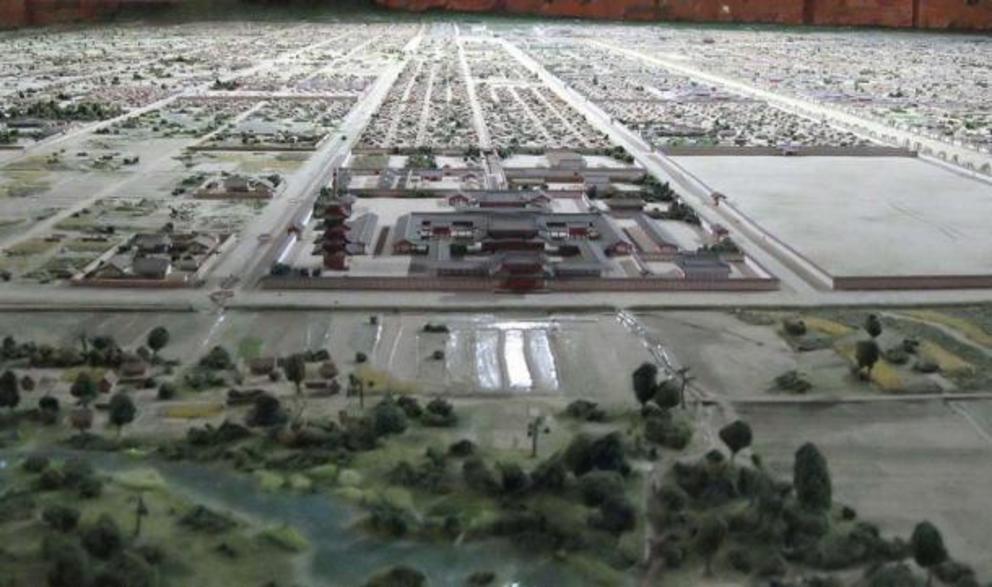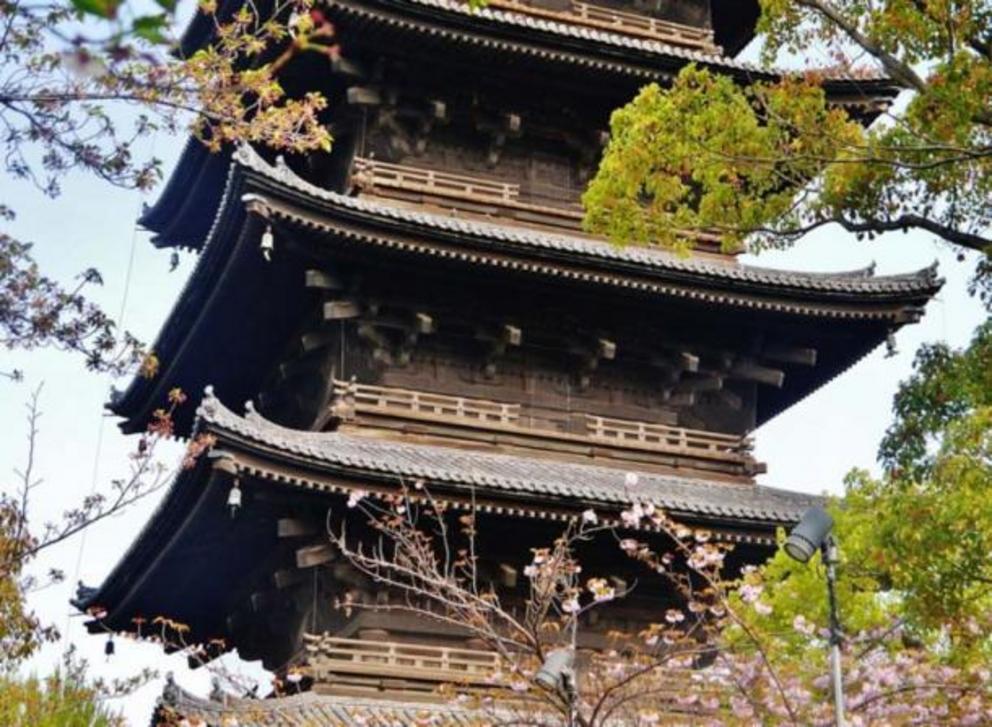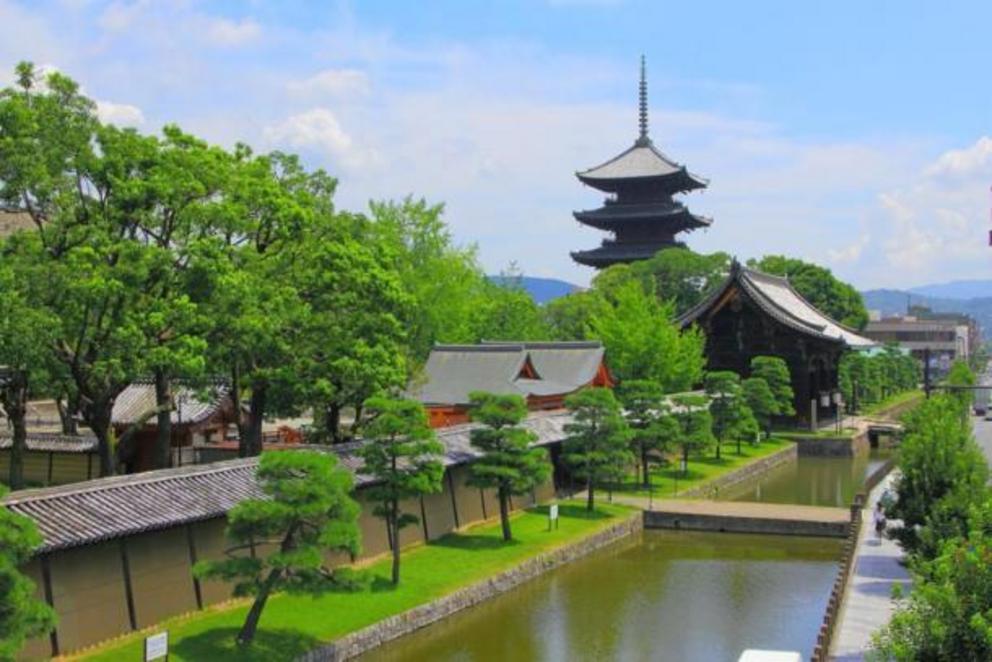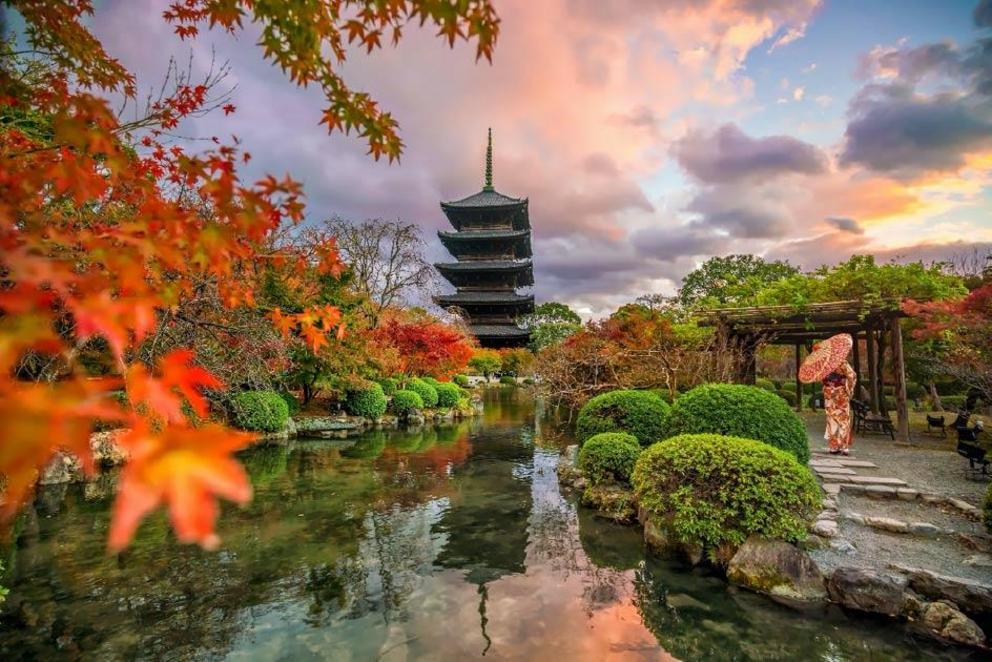Evidence of long-lost temple pagoda unearthed in Japan
Toji Pagoda, Kyoto. The Saiji pagoda was similar in build.
Archaeologists in Kyoto, Japan believe that they have found the remains of an ancient pagoda. This five-story pagoda has been lost for centuries and it dates to the Heian period (794-1185). This discovery is also helping researchers to learn more about the city when it was the capital of Japan.
Archaeologists have been working in the Minami Ward, in the heart of the medieval Japanese capital since September. The work took place in an area that has been associated with the long-vanished Saiji temple and is near the Toji temple, which is a UNESCO World Heritage Site.
A team of experts has “been investigating a 1,023 square foot (95 square meter) plot that is thought to be the site of the pagoda” according to SFGATE. Recently the archaeologists found the remains of a large building in what is now private property.
 Artist’s concept of the Saiji temple. The five-story pagoda is in the left corner in the foreground.
Artist’s concept of the Saiji temple. The five-story pagoda is in the left corner in the foreground.
Foundations of the Pagoda
During the dig, “excavators discovered 12 oval-shaped holes in the ground” according to The Asahi Shimbun . The holes are in a grid pattern and about 6 feet (2 meters) long and roughly 3 feet (1 meter) deep. The holes were created by “tamping down layers of pebbles and clay” reports SFGATE.
These type of holes were made to strengthen the foundations before they were overlaid with foundation stones. According to NNY360 these extensive foundations “would have prevented a large building from subsiding”.
The foundation may be that of the pagoda of the Saiji temple. This is based on the fact that such foundations would have supported a larger building, and it is known from records that the pagoda was five stories high. Furthermore, the foundation is close to the Toji temple , and it is also known from documentary sources that the Saiji pagoda was very close to that UNESCO World Heritage site.
The Asahi Shimbun quotes Nobuya Ami, a professor, at Kindai University Archaeology Department as saying, that the “pagoda in Saiji temple is thought to be at a location directly opposite the five-story pagoda in Toji temple, so the remains are highly likely to be it”.
The Saiji Temple
The unearthed holes probably formed the foundation of the five-story pagoda, that was part of the Saiji temple complex. It was built in the years after the Heian dynasty came to power and made Kyoto their capital, in the 9th century.
 Saiji temple complex viewed from the south in a miniature model.
Saiji temple complex viewed from the south in a miniature model.
According to contemporary sources, work began on the Buddhist temple in 882 AD. Some earthenware found at the site supports the theory that the foundations are from the 9th century to the time when the pagoda was being built.
The construction of the temple took many years. Directly to the east of Saiji temple was the Toji temple and the two buildings were very similar in design. The Asahi Shimbun reports that the two temples were built “across a straight line connecting the Rajomon gate and the Suzaku oji street in a north-south direction”.
 Close-up of the Toji five-storied pagoda.
Close-up of the Toji five-storied pagoda.
Buddhism in Japan
The Saiji and its companion temple the Toji were among the few Buddhist monuments that were permitted to be built in the Heian period . The only other one was in the Imperial Palace.
This is because the Japanese emperors wanted to tightly control the power of the Buddhist monks in particular. The twin temples, in the heart of Kyoto, played a crucial role in the growth of Buddhism in Japan, which has decisively influenced the nation’s society and culture.
Most of the Saiji temple was gutted by fire in the 990s but its pagoda survived. However, it was also “burned down in 1233 during the Kamakura period (1192-1333) but was never reconstructed” reports The Asahi Shimbun .
A small park commemorates the destroyed temple. Its sister temple the Toji still stands, even though it has been reconstructed many times.
 View of the Toji complex showing the Toji pagoda.
View of the Toji complex showing the Toji pagoda.
Investigations are continuing at the site. More finds are needed to confirm for certain that the foundation holes belong to the temple. Not everyone agrees that the remains are from the 9th century pagoda and they may possibly only belong to a warehouse or public building from that period.

